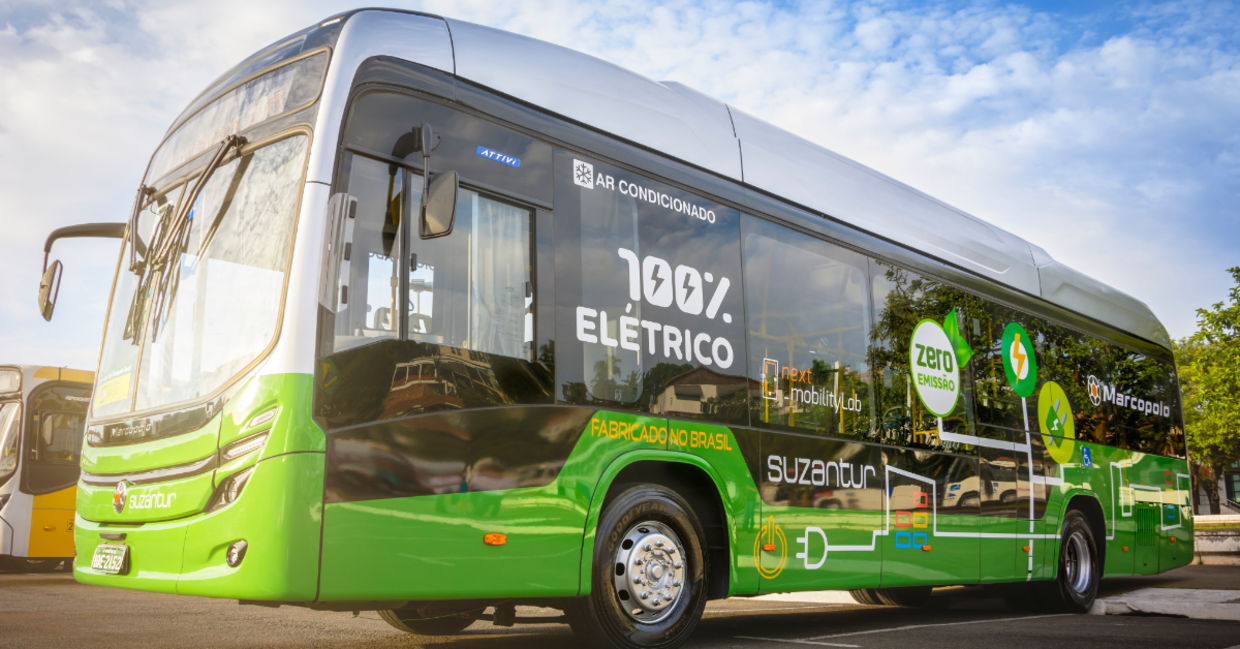
(Marcelo.mg.photos / Shutterstock.com)
Innovation in sustainable transport has an exciting first: a fleet of electric public transportation buses in Israel is the first in the world to be powered by a commercial wireless charging terminal, representing a milestone in sustainable travel, as The Jerusalem Post reports.
An electric vehicle (EV) is defined by the Alternative Fuels Data Center of the US Department of Energy as a vehicle that can be powered by an electric motor drawing electricity from a battery and that is capable of being charged from an external source. As Bus News reports, the site in Israel uses stationery wireless charging for parked urban electric buses, both at night and during the day, while the buses are parked in bays at the public bus terminal.
Startup innovation serves consumer-led public transportation company
Electreon, the startup with the cutting edge wireless charging technology is partnering with the Electra Afikim company, a major Israeli transportation operator to deliver wireless EV bus charging in the center of Israel. The Jerusalem Post explains that as well as technology provision, Electron manages the various construction phases, taking in electric infrastructure and civil engineering works.
In Elecreon’s own words: “We deliver cost-effective, end-to-end charging infrastructure and services, including dynamic charging wireless Electric Roads, to fleet operators via flexible business models to accelerate electric vehicle adoption.”
This startup works simultaneously on facilitating charging while driving, queueing and while parked for what it calls dynamic and stationary vehicles.
How does Electreon’s wireless EV charging work?
The company’s website explains that it installs copper coils just below the road’s asphalt surface to transfer power from the electricity grid to the road, with work done at night to minimize disruption. Once this is done, the “Electric Road” is ready to start charging the electric buses, in tandem with patented vehicle side technology and charging management software as follows..
The “Roadway System'' is a management unit that transfers power from the electricity grid to the in-road wireless charging coils when an authorized vehicle is parked directly above them. A “Vehicle Kit”, an installed receiver unit in the bus, receives the wireless energy from the wireless charging coils and transfers it to the vehicle battery, while this is all pulled together by cloud-based management software which allows live monitoring and offers smart charging insights.
Bus News reveals that Electreon collaborated with three international bus manufacturers that transport company Electra Afikim chose, HIGER, Ankai, and Sunwin. These integrated Elecreon’s vehicle receivers into their electric buses.
Incidentally, this is the same infrastructure used to charge via wireless Electric Road Systems (wERS), a way for cars to wirelessly charge while driving, that this company also pioneered, according to the No Camels technology news portal. As Electron details, its copper coils can be placed “along highways, at bus stations, in parking lots and at logistics centres.”
Wireless EV charging: The benefits
Beyond the obvious appeal of the convenience that seamless wireless EV charging offers, are a number of additional benefits that together seem likely to boost the greener transport that EVs offer. As CEO of Electreon, Oren Ezer, tells No Camels: “We are promoting green public transportation in the city with the aim of reducing air pollution and continuing to improve the quality of life of the residents and the environment.”
Additionally, wireless charging is likely to encourage EV utilization as it cuts charging downtime, and range anxiety. It also means that battery sizes can be reduced, making vehicles more sustainable, less costly, and lighter, with more space for passengers or cargo.
Another benefit is that multiple vehicles can charge at the same time from the same system without placing extra pressure on the electric grid. The technique’s underground installation also means that there are no unsightly visual impacts on the landscape.
YOU MIGHT ALSO LIKE:
Synthetic Sponges May Save The Day!
Harnessing the Power of Seas
New Swedish Electric Car Comes in a Flatpack Box







